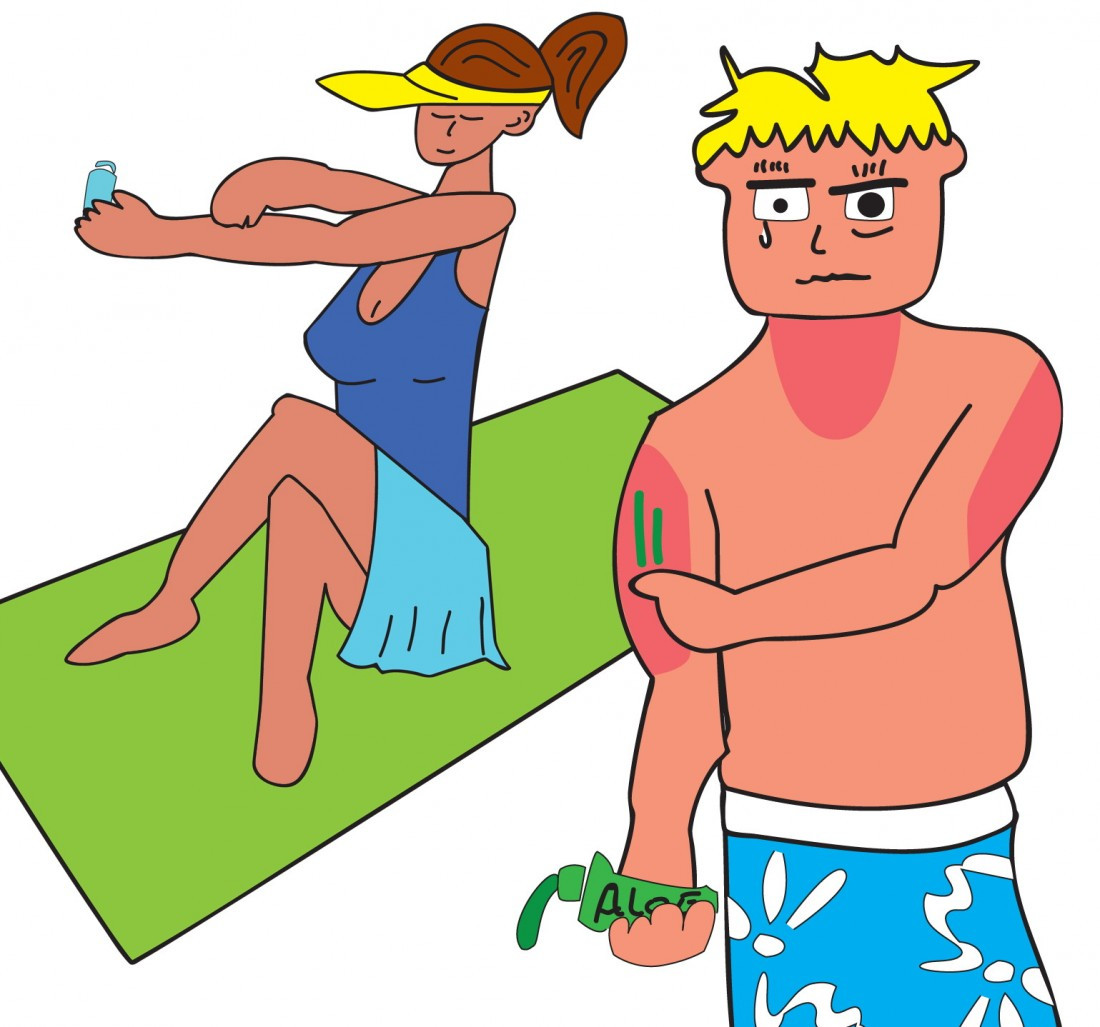Protecting your skin from the sun
Sunburns are never sexy, so here’s how to avoid and treat ‘em
As we get closer to summer, the importance of wearing sunscreen is drilled into our heads. So why all the fuss?
Before we understand what sunscreen is and what it does for us, it’s important to know what we are shielding ourselves from and why. According to Gosunsmart.org, UVB rays affect the top layer of the skin and are responsible for burning. UVA rays affect the lower layers of the skin and are responsible for aging.
When you get that much sought after tan, it’s your skin’s way of protecting itself from the sun’s harmful rays. When the skin is damaged it can lead to early wrinkles, skin cancer and other skin problems. Some more cosmetic repercussions of tanning include sun spots (darkened pigmentation spots on the skin), loss of elastin and collagen (which keeps the skin taught), dryness and wrinkles.
How to protect your skin
The days of neon pink Zinka sunblock on your nose are over! Sunscreen, which contains chemicals that absorb UV rays before they damage your skin, is more widely used than sunblock, which blocks UV rays from reaching the skin.
Sunscreen is a more popular choice for sun protection, apart from wearing protective clothing and lurking in the shadows to hide from the sun. Sunscreen still allows you to get a tan by absorbing most of the UVA/UVB rays.
Choosing sunscreen
The Canadian Dermatology Association (CDA) has recently started certifying sunscreen. Participants have to submit an application with a series of independent laboratory tests that certifies that the product:
- Has a UVB sun protection factor (SPF) of at least 15.
- Contains broad spectrum UVA block.
- Is non-comedogenic (doesn’t clog pores), non-irritating and hypo-allergenic.
- Has minimal or no perfume.
The CDA also will not consider any product that is marketed for tanning, so it’s a good idea to look for sunscreens that are approved by the CDA.
How to use sunscreen
First, follow the directions on your sunscreen bottle. Put sunscreen on at least 30 minutes prior to sun exposure, and apply before you dress. Don’t forget places on your body that don’t always see a lot of sun, like your underarms, lips and ears.
Re-apply sunscreen after you have entered water, perspired moderately to profusely, and about every 90 minutes.
How do I know when to use sunscreen?
Utilizing skin care and make-up products that contain SPF in your every day routine will go a long way. This will help your skin on a daily basis – after all the sun does come out everyday, and UVA/UVB rays are always radiating from the sun. Think about it: If you drive, take a look at your left arm; is it darker than the right? If so, this is because the sun hits your left arm more.
Another way to see what level of sun protection you need is to watch the UV index. UV index, according to Dermatology.ca, indicates the level of sun penetration into the skin.
The Weather Network says not to confuse temperature and UV. Light clouds or a breeze can make you feel cooler, but they don’t reduce the UV. UV rays can burn even if it’s cold. So yes, this means wearing sunscreen in winter too! The brighter the surface you are on, the more UV it reflects back onto your skin. Snow is highly reflective.
What do I do if I get a sunburn?
MayoClinic.com recommends the following to treat a sunburn:
- Keep it cool: Apply a cold compress like a damp towel, or have a cool shower.
- Keep it moist: Apply aloe and moisturizing cream.
- Leave blisters intact: If they are opened, it may get infected, so try covering with gauze.
- Use an over-the-counter pain reliever, or an anti-inflammatory if needed in extreme cases.
- Treat peeling skin gently: It’s the body’s way of getting rid of the top layer of damaged skin. Make sure you continue to moisturize your skin even when it is peeling.
It’s never too late to start protecting your skin from the sun. If you’re desperate for a tan, use a self-tanner and a sunscreen when you go outside to tan. Don’t baste yourself in baby oil and lie in the sun all day – you’re only damaging your largest organ.
Velangeline Ferrigno has spent the past eight years working as a make-up artist.
Published in Volume 63, Number 28 of The Uniter (June 18, 2009)







